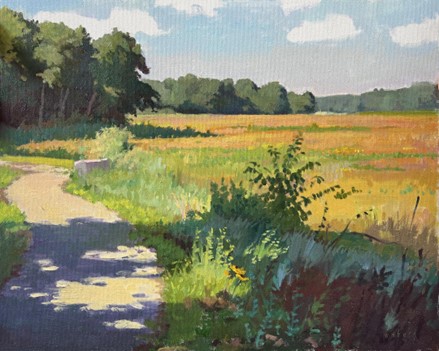Prune Hydrangeas & Propagate Rhododendrons
 Color is everywhere and trees (and shrubs) are near peak on the Cape. I’ve been out a lot lately trying to soak in the color as I know the gray twig season of winter is just around the corner. Most of us are probably avoiding the inevitable leaf raking that’s just over the horizon but beyond clean-up there are a few less mundane, more enjoyable challenges in the Garden that you can be thinking about.
Color is everywhere and trees (and shrubs) are near peak on the Cape. I’ve been out a lot lately trying to soak in the color as I know the gray twig season of winter is just around the corner. Most of us are probably avoiding the inevitable leaf raking that’s just over the horizon but beyond clean-up there are a few less mundane, more enjoyable challenges in the Garden that you can be thinking about.
Winter, from November till May, is the time to prune Hydrangea paniculata and Hydrangea arborescens. As you know, these species flower on new growth so you can take out your pruning frustrations on these two species any time we have a warm day. In fact, pruning Hydrangea paniculata before we have heavy snow is a good idea as the large flower heads will collect snow and can break damaging the plant. Prune them this fall to avoid these issues. Keep in mind that once leaves fall, you can collect anything removed during pruning and root them as hardwood cuttings over the winter. Hydrangeas are particularly easy to root this way. Long stems of Hydrangea paniculata can be cut and stuck in deep pots and trained as standards. The long, straight stems are a great beginning for a tree-form hydrangea. Just cut a long stem, scar the stem as you would any cutting, treat the end and scar with rooting hormone and stick the cutting in a deep, narrow container. Once stuck, place the container in a coldframe or other protected but cold location and in the spring you’re well on your way to a standard-trained hydrangea! Hydrangea arborescens doesn’t have the ability to grow into a tree-form but you can still do the cuttings and propagate them for next season.
Now is also the time of the year to propagate your rhododendrons. Fall is the season to take cuttings and root new plants. At Heritage Museums & Gardens we do rhododendron propagation from September till early December. Rhododendron cuttings should be 4-7” long, have several leaves, and the parent plant should be well-hydrated. By that I mean make sure your parent plant is well-watered prior to taking the cuttings. That really shouldn’t be an issue this year since we’ve had adequate rainfall this fall. Once taken, the leaves should be cut-back to reduce transpiration from the cutting. I usually use pruners to cut the leaf in half. You can also use a sharpie marker to write the variety of the plant on the leaf. Scar the leaf on two sides and treat it with rooting hormone. Once treated, the cuttings are placed in a sterile media composed of a mix of 50% milled sphagnum moss, and 50% horticultural perlite or sharp sand. The container should be covered with clear plastic and placed in an area with no direct sunlight. Keep them warm, but not hot and rooting usually takes about 3 to 4 months.
Enjoy the season!






